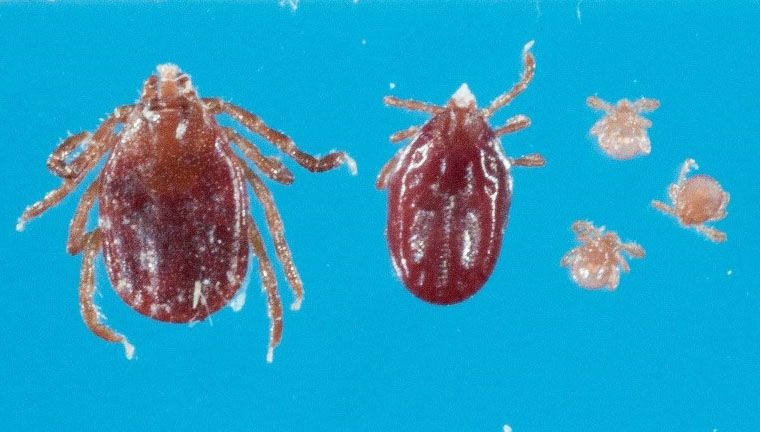
A new tick species that was recently detected in the United States can suck enough blood to kill a young animal. Not native to the U.S., the Asian long-horned tick has been found in seven states. This marks the first time in 50 years that a non-native tick species has arrived in this country.
These pests might be more of a threat to livestock than to humans. So far, none of the ticks have shown they carry human diseases. In Asia, however, the species is known to transmit a virus that is lethal to 15 percent of its victims, The New York Times reported.
The long-horned tick was spotted in Pennsylvania for the first time last week. It has also been found in New York, Arkansas, North Carolina, Virginia and West Virginia. The ticks have been discovered in public parks and a golf course in Bergen, Essex and Middlesex counties in New Jersey.
A new invasive tick is spreading in the U.S.: The Asian long-horned tick, Haemaphysalis longicornis, is spreading rapidly along the Eastern Seaboard & has been found in 7 states including the heavily populated suburbs of New York City. https://t.co/wWQQh4e53Y
— C. Michael Gibson MD (@CMichaelGibson) August 7, 2018
The first long-horned tick was found last summer in New Jersey. Before this discovery, the tick was not known to be present in the U.S., though there were records of at least a dozen previous collections of this species on animals and materials at U.S. ports of entry.
This species could spread rapidly throughout the country, at least in part because they multiply quickly. Females can lay hundreds of eggs without mating, according to The New York Times.
The species is dark brown and grows to the size of a pea when completely engorged. Both larval and nymphal stages are extremely small and can be difficult to see with the naked eye. Adult ticks are seen mainly during early summer, larvae from late summer to early winter and nymphs mainly in the spring.
State veterinarian David Wolfgang told the Pittsburgh Tribune-Review that these ticks can be hard to identify and are easily confused with other species.
"Even experts have difficulty distinguishing among tick species, so it is important to take precautions to protect pets, livestock and family members from becoming a host for ticks of any kind," he said.
The U.S. Centers for Disease Control and Prevention (CDC) lab in Fort Collins, Colorado, has tested approximately 100 of these ticks for three viruses that can harm humans. The results came back negative for Powassan, Heartland and Bourbon viruses, The New York Times reported.
"The jury's still out on how big a threat this is," Ben Beard, the CDC's deputy director of vector-borne diseases, told The New York Times. "But we think it's a very important question to address."
Uncommon Knowledge
Newsweek is committed to challenging conventional wisdom and finding connections in the search for common ground.
Newsweek is committed to challenging conventional wisdom and finding connections in the search for common ground.
About the writer
Lisa Spear is a science writing fellow at Newsweek. She's previously contributed to a number of other outlets including Time and ... Read more
To read how Newsweek uses AI as a newsroom tool, Click here.








